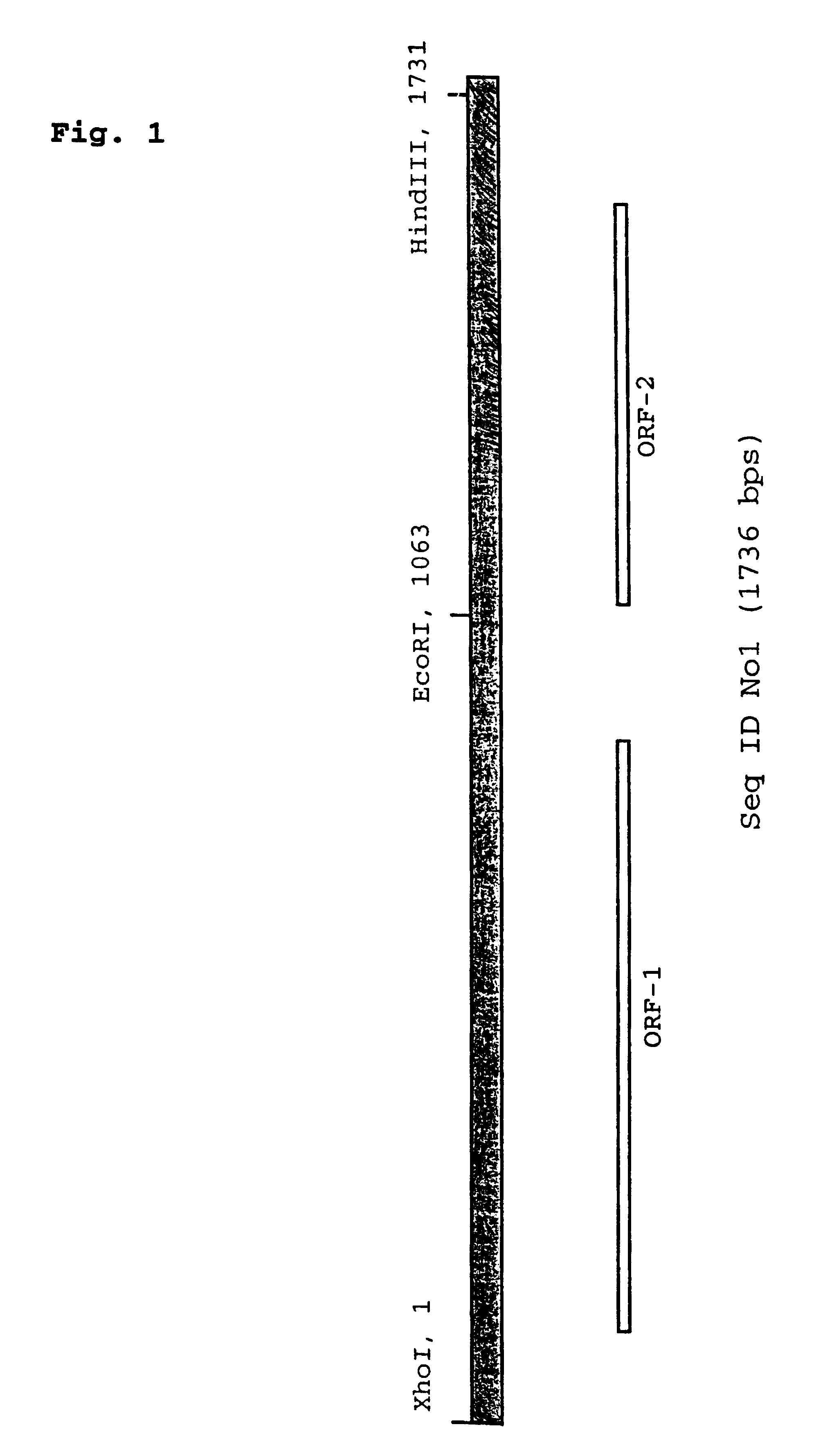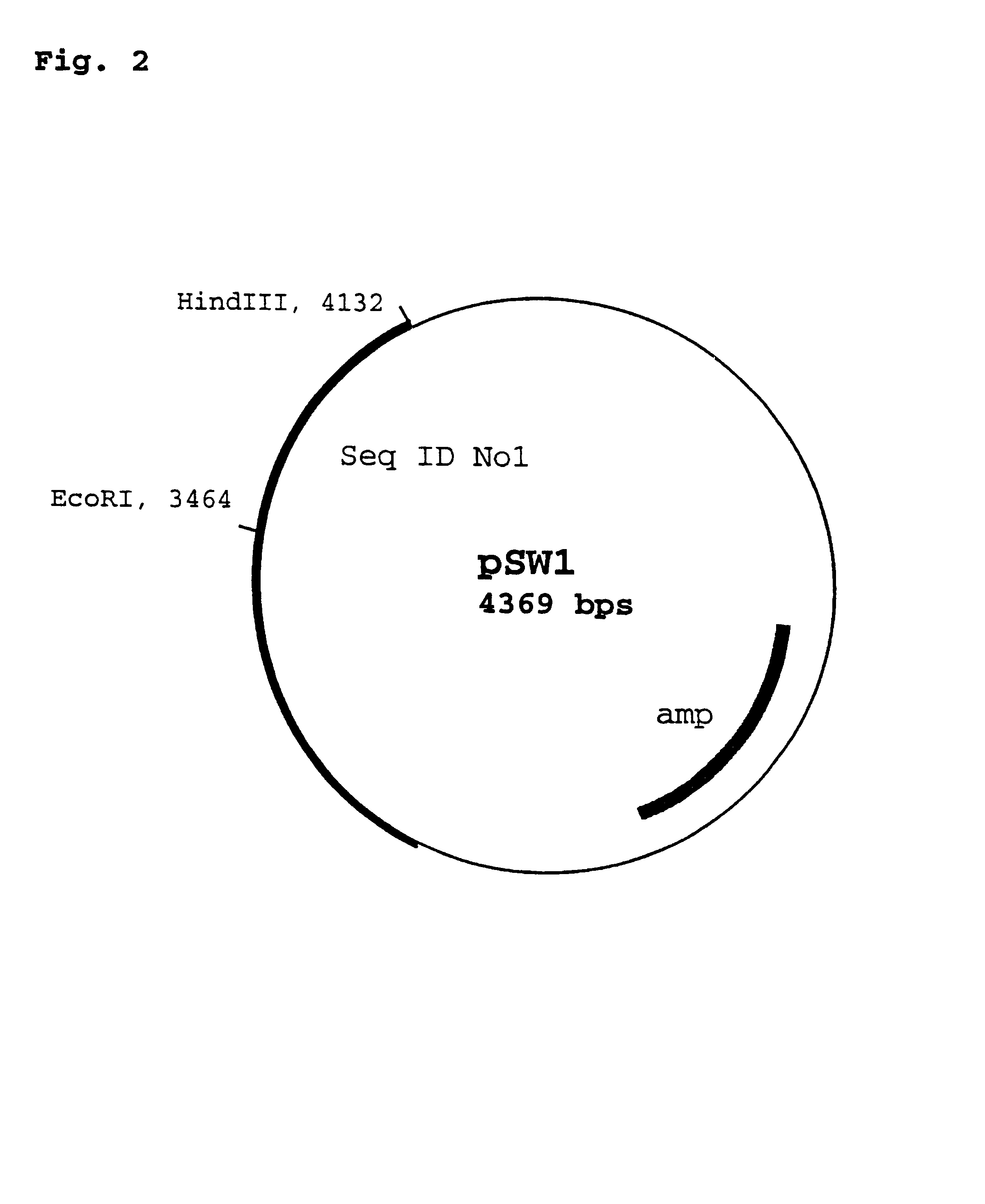Vector for integration of heterologous sequences into poxviral genomes
- Summary
- Abstract
- Description
- Claims
- Application Information
AI Technical Summary
Benefits of technology
Problems solved by technology
Method used
Image
Examples
example 1
Construction of the Insertion Vector
To obtain sequences suitable for recombination into a poxviral genome, a DNA fragment derived from the modified vaccinia Ankara virus (deposited according to the Budapest Treaty under Deposit No.: V94012707 at the European Collection of Animal Cell Cultures in Salisbury, UK) was amplified by conventional PCR using the following oligonucleotide primers: A24R.sub.-- 1; 5'-CCGAAGCTTAATGAACGCCAGAGG-3', SeqID No.: 2; A27L.sub.--1c; 5'-AGGCTCGAGTAAGAGCGGCTATGAT-3', SeqID No.: 3.
The oligonucleotide primers comprise, close to the 5' end and marked by underlining, a recognition sequence for the restriction enzymes HindIII (SeqID No.: 2) or XhoI (SeqID No.: 3) for subcloning of the resulting amplification product into a cloning vector. Accordingly, the specifically amplified sequence (SeqID No.: 1), which has a molecular weight of 1.7 kb, was subcloned SalI / HindIII into a pUC19 cloning plasmid (GenBank Accession No.: X02514). The resulting plasmid was desig...
PUM
| Property | Measurement | Unit |
|---|---|---|
| Nucleic acid sequence | aaaaa | aaaaa |
| Immunogenicity | aaaaa | aaaaa |
Abstract
Description
Claims
Application Information
 Login to View More
Login to View More - R&D
- Intellectual Property
- Life Sciences
- Materials
- Tech Scout
- Unparalleled Data Quality
- Higher Quality Content
- 60% Fewer Hallucinations
Browse by: Latest US Patents, China's latest patents, Technical Efficacy Thesaurus, Application Domain, Technology Topic, Popular Technical Reports.
© 2025 PatSnap. All rights reserved.Legal|Privacy policy|Modern Slavery Act Transparency Statement|Sitemap|About US| Contact US: help@patsnap.com


